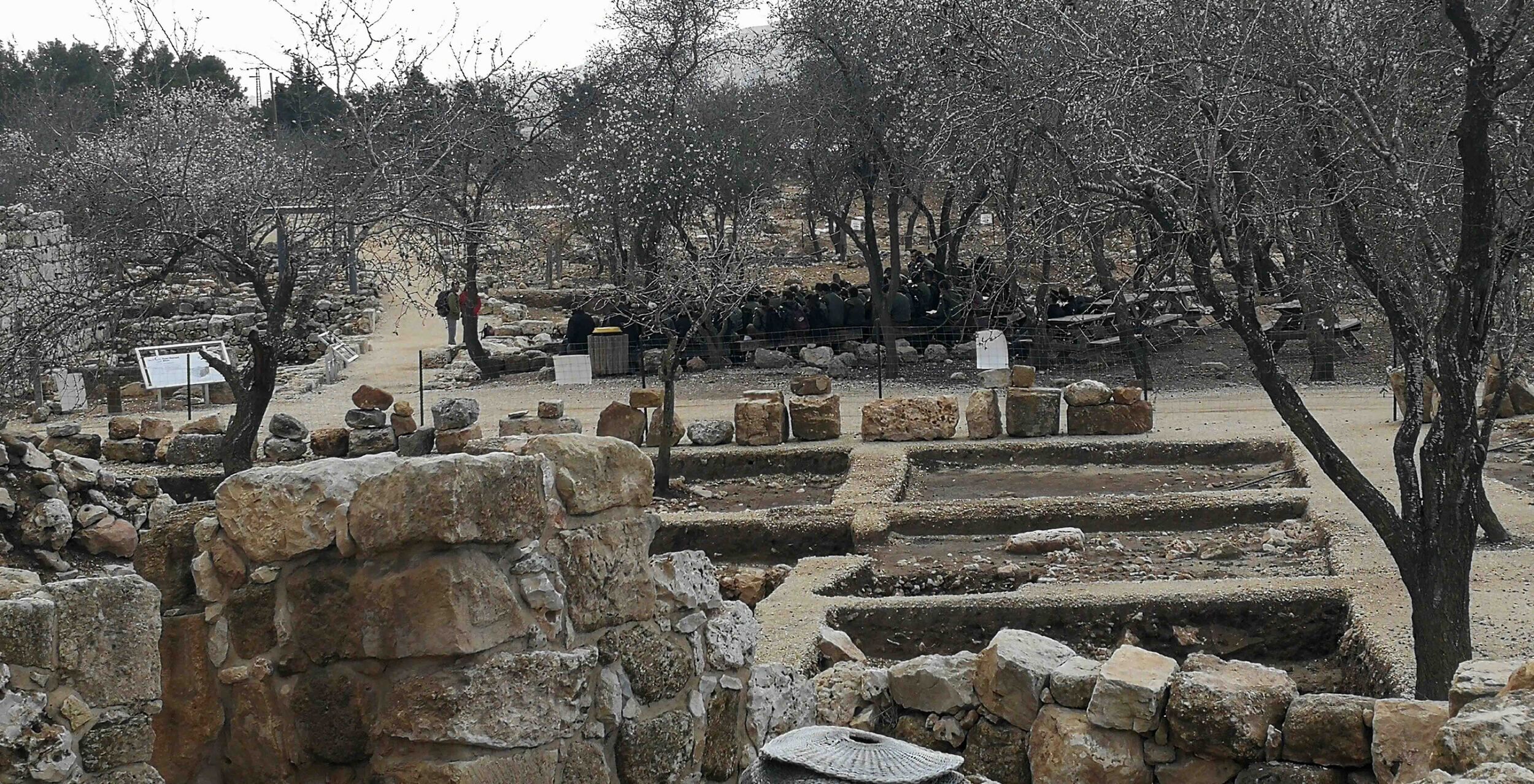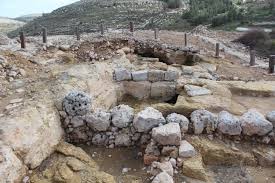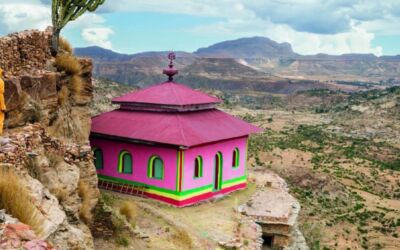
Destination Spotlight: Shiloh
The Israelites had left oppression in Egypt and were in the Sinai Peninsula. At God’s command, Moses directed the building of a tabernacle, or tent, which would hold the Ark of the Covenant and other sacred objects. The Ark and Tabernacle were portable, set up when God’s people stopped at a place in the wilderness, then taken down and moved to their next stop. This pattern would continue for 40 years until the people of God entered the Promised Land. After the conquest of Canaan, Joshua ordered the Tabernacle to be moved to a permanent site in Shiloh, where he oversaw the division of the land among the twelve tribes. Shiloh became the center of Jewish worship, the first capital.

Pastor Reynolds writes, “I learned that on an archaeological dig, it is great to find small things – coins, weapons, pottery, bones, etc. – all the things that help date the level on which they are found. However, they [the dig leaders] are looking for big things like rooms, houses, meeting places, walls, gates, etc. The place Aaron and I were working was thought to be the main entrance to the city during then Roman Era. That was pretty exciting. We will not know until the excavation continues next summer. I look forward to learning if that is indeed the spot. It was a thrill to have my hands in the dirt at the location where the Tabernacle rested for the first 369 years the Hebrew people were in the Promised Land.”
The Bible tells us that the Tabernacle remained in Shiloh for over three centuries, during the period of the Judges. Eventually, with the building of the First Temple in Jerusalem, the Tabernacle was moved there. However, until the death of the High Priest Eli, Shiloh was the center of Jewish worship and the main pilgrimage site for the Children of Israel. Three times each year, faithful pilgrims of the twelve tribes traveled to Shiloh, bringing festival offerings.
With the Tabernacle now in Jerusalem, Shiloh declined as a pilgrimage site. Philistines attacked and destroyed the town. Eventually, Romans and Christians took over the mostly-deserted spot. Later, Muslims conquered the area. Shiloh became just another small hilltop town. In the 1920s and 30s, European archaeologists began to explore and work in the area. Others followed, but it was not until excavations in 2006 uncovered several mosaic floors and Greek inscriptions that once and for all identified the site as the ancient village of Shiloh. Since then, a great deal of attention has been devoted to uncovering the past and developing the area.

Special annual events that take place at Shiloh have their roots there as well. We know that Eli was the last of the high priests to serve at Shiloh. The book of Samuel tells us that Eli’s wife Hannah entered the Tabernacle and prayed for God to give her a child. After the birth of her son, Samuel, she reentered the Tabernacle, this time to offer a prayer of thanksgiving. When he was old enough, Hanna turned him over to Eli to be raised in the service of the Lord. Samuel would grow up to become one of Israel’s great prophets. Today, a special women’s prayer and music festival, “Hannah’s Prayer,” is held each year at Shiloh, around the time of Rosh Hashanah.
Thanks to the archaeologists and developers of the site, we can visit the very place where Joshua, Hannah, Eli and Samuel changed history. Whether you visit Shiloh as a tourist or sign up to work on the archaeological dig, you will be moved by this special site.
Nicholas Mancino has been serving the church through travel for over 50 years, having begun his ministry in travel in the 1960s. He is the cofounder and president of Journeys Unlimited, where he’s helped thousands of fellow Christians encounter the Spirit and bask in Christian fellowship while traveling to the Holy Land and beyond. You can reach Nick with your inquiries by email at nmancino@groupist.com or at 800-486-8359
Related Posts
Video: The Road to Jerusalem
In the holy land, where every stone has a story to tell, we take a break on the road to Jerusalem and explore what daily life in the time of Christ was like:
Video: explore the immense cultural riches of Ethiopia
The rock-hewn churches of Lalibela; St. Mary’s church where the Ark of the Covenant is believed to lie; the castles of Gondar; the monasteries of Bahir Dar; these few highlights barely scratch the surface of the immense hidden treasure trove waiting to be explore.
The Miracle at Cana
The area around the Sea of Galilee is rich in biblical sites. One site that no visitor should miss is Cana.
Ageless Ethiopia
Though it may not be considered a wealthy nation by economic standards, Ethiopia is a land immensely rich culture and heritage. The country is old beyond imagination, home of “Lucy” the 3 million years old human ancestor, but it also offers modern conveniences for visitors.



